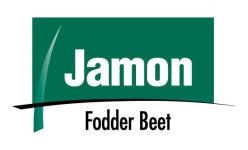Jamon
VERSATILE, HIGH YIELDING BEET.

- Sowing Time Late September to early November
- Grazing Seasons Autumn, Winter
- Time To First Grazing Anytime after all herbicide grazing withholding periods are met. Typically 24-28 weeks to reach yield potential
Jamon is a very uniform, monogerm cultivar that has been evaluated in New Zealand for a number of years. It is an orange skinned cultivar with a bulb drymatter percentage of between 16 -18%*. Jamon has performed consistently well across New Zealand for several years and is French fodder beet breader Florimond Desprez's most popular product.
- True monogerm cultivar
- Medium to high drymatter type (15-17%)*
- 50% of bulb above ground
- Proven to perform across all stock classes and environments in New Zealand
- Above ground colour: orange
*Variation in DM % can occur under different sowing rate and/or environmental conditions. Northern North Island drymatters have consistently been lower than stated.

Sowing & Establishment
| Suggested Sowing Time | Late September to early November |
|---|---|
| Suggested Sowing Rate (seeds/ha) | 80,000-90,000 grazing |
| Time to First Grazing | Anytime after all herbicide, fungicide and insecticide grazing withholding periods are met. Typically 24-28 weeks to reach yield potential |
| Number of Potential Grazings | 1 |
| Potential Yield (t DM/ha) |
Average = 18-22 Top = 30 + |
| Bulb DM% | 16-18%* |
| Seed Type | True monogerm |
| In-situ Grazing | Most suited |
| Mechanical Harvesting | May be lifted, not ideal |
Varieties
Agricom has been supplying fodder beet to farmers for a number of years, and in that time has conducted research into cultivar performance, crop husbandry and animal feeding techniques. Agricom has partnered with world leading fodder beet breeding companies, Florimond Desprez and DLF Beet Seed, to access new genetics for improved yield and quality. The table below shows the primary varieties Agricom markets in New Zealand.
| FODDER BEET VARIETY BULB DM % | |||||||
|---|---|---|---|---|---|---|---|
| Low | Medium | High | Sugar Beet | ||||
|
Feldherr |
|||||||
|
Jamon |
|||||||
|
Bangor |
|||||||
|
Brunium |
|||||||
|
Delicante 17-20% |
|||||||
|
Timbale 17-20% |
|||||||
|
Surf |
|||||||

Rotation Products

Read more on Fodder Beet
Fodder Beet Case Study
